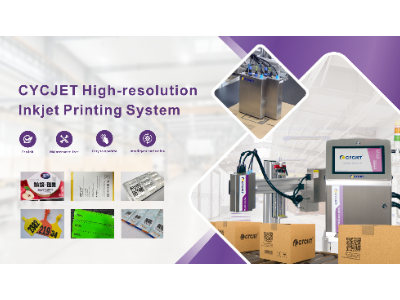08-01
LG Innotek to Foster the Automotive Car Sensing Business into a USD 1.4 Billion Business by 2030, Led by Its RGB-IR In-Cabin camera module
 2024-12-25
2024-12-25
 LG Innotek
HaiPress
LG Innotek
HaiPress

Higher resolution and wider field of view,enabling driver and passenger monitoring with a single camera
Minimized module size using "wedge bonding" process,increasing space utilization and design flexibility
Fostering of business to reach USD 1.4 billion by 2030,strengthening the line-up of car sensing solutions for both interior and exterior applications
SEOUL,South Korea,Dec. 24,2024 -- LG Innotek (CEO Moon Hyuksoo) announced on December 23 the development of a "Automotive RGB-IR In-Cabin camera module" equipped with a five-megapixel RGB (red,green,blue)-IR (infrared) sensor.
This RGB-IR In-Cabin camera module is a component designed for installation inside vehicles and can be mounted in various locations,such as on the rearview mirror or above the front of the passenger seat. It can detect various aspects of the driver's condition,such as drowsiness or inattention,and enables real-time monitoring of the conditions of passengers as well,such as whether seat belts are being used in the front and second rows.
The key to autonomous driving is ensuring the safety of drivers,passengers,and pedestrians. Alongside exterior components,such as camera modules for Autonomous Driving (AD) and Advanced Driver Assistance Systems (ADAS) and Light Detection And Ranging (LiDAR) systems,the industry is increasingly focusing on In-Cabin cameras to monitor passengers.
Of particular note is that Europe has mandated the installation of Driver Monitoring Systems (DMSs) in vehicles starting in 2025,and other major countries,including the United States and Japan,are considering similar requirements. As a result,global automakers are increasingly adopting In-Cabin cameras.
Higher resolution and wider field of view,enabling driver and passenger monitoring with a single camera
Previous In-Cabin cameras were mostly limited to certain specific functions,such as DMSs and Occupant Monitoring Systems (OMSs). Executing diverse functions often required the installation of multiple cameras.
In contrast,"LG Innotek's RGB-IR In-Cabin camera module" can perform various functions with a single camera. Installed with a high-resolution RGB-IR sensor,it captures red,and blue visible light as well as infrared wavelengths,offering a wider viewing angle through the company's unique wide-angle technology.
With a resolution of five megapixels,five times higher than conventional cameras,"LG Innotek's RGB-IR In-Cabin camera module" delivers clearer images for more accurate occupant monitoring. It also supports entertainment features such as video calls and conferencing,which are expected to become more relevant as autonomous driving advances. Additionally,its ability to detect infrared rays allows it to clearly recognize subjects in dark environments,enabling accurate monitoring of occupants even at night,when identifying driver drowsiness is most needed.
The "RGB-IR In-Cabin camera module" also boasts a Horizontal Field Of View (HFOV) that is more than double that of earlier models. LG Innotek has applied its proprietary wide-angle technology to support a HFOV of 143˚,expanding the scope of monitoring. This offers visibility of both front-row and second-row seats from various angles.
Minimized module size using "wedge bonding" process,increasing space utilization and design flexibility
"LG Innotek's RGB-IR In-Cabin camera module" is 15% smaller than existing models. The smaller size of the module allows it to be installed in various locations. For automakers,this enables them to not only make more efficient use of the space inside the vehicle but also increase their design freedom.
The company applied the "wedge bonding" process to minimize the size of the product. Wedge bonding is a technology that uses ultrasonic energy to attach chips and substrates.
In the past,the chips used in the module had to be secured to Printed Circuit Boards (PCB) by applying heat to the joint,with a "heating block" added to the bottom of the PCB board to keep it heated. Wedge bonding eliminates the need for such components and reduces the size of the module by eliminating the need for space for the heating block.
Fostering of business to reach USD 1.4 billion by 2030,strengthening the line-up of car sensing solutions for inside and outside the vehicle
This year,LG Innotek further strengthened its portfolio of vehicle sensing solutions for both the interior and exterior of vehicles by introducing its high-performance heating camera module and high-performance LiDAR,followed by RGB-IR In-Cabin camera module. These flagship products are being actively promoted to automotive customers in North America and Europe.
Looking ahead,LG Innotek will continue to introduce,based on its world-leading optical technology,high-value products such as an "all-weather high-performance camera module" with high-performance heating and cleaning functions. By offering exclusive customer value,the company plans to accelerate its seizure of market leadership.
LG Innotek CEO Moon Hyuksoosaid,"The vehicle sensing solutions business,including camera modules and LiDAR,is a core pillar of LG Innotek's business in autonomous driving components." He went on to add,"We are committed to growing our vehicle sensing solutions business to USD 1.4 billion business by 2030."
According to market research firm S&P Global,the global automotive camera module market is projected to grow from approximately USD 6.923 billion in 2023 to USD 10.769 billion by 2030,showing an average annual growth rate of 7%.
LG Innotek will unveil its "RGB-IR In-Cabin camera module",along with its latest innovations,at the Consumer Electronics Show (CES) 2025 in Las Vegas in January next year.

LG Innotek’s high-performance in-cabin camera module

LG Innotek employees demonstrate the high-performance in-cabin camera module

LG Innotek employees demonstrate the high-performance in-cabin camera module




